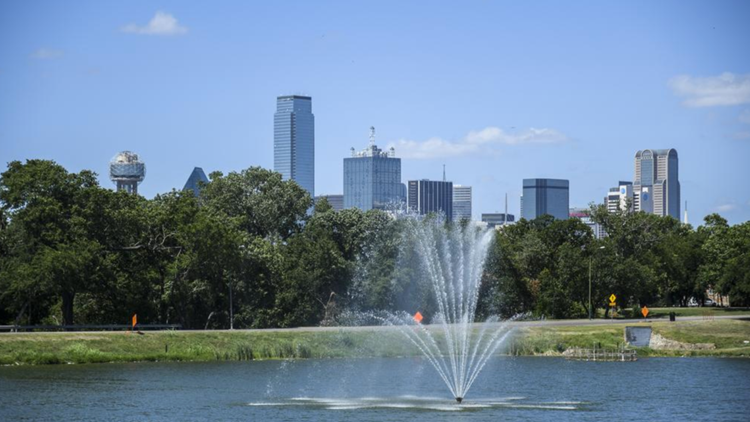Since the Opportunity Zone program was established under the 2017 Tax Cuts and Jobs Act, the Internal Revenue Service has issued several rounds of regulations that have provided clarity and guidelines for the federal tax program designed to spur investment in struggling neighborhoods.
These regulations, particularly the 169 pages of them issued in April, have given investors a better understanding of how to fully utilize the program to reduce, defer or eliminate taxes on certain capital gains that are invested in designated zones.
But there is still little in place that outlines how new investments in these zones, and the developments that come from them, can benefit the residents living within them.
As comfort levels with the program rise in the investment community and the window for investors to receive the maximum tax exclusion on rollover gains narrows, some real estate and tax experts in Dallas say now is the time to focus attention on the communities in the city’s 18 Opportunity Zones to ensure they are not left behind.
Some experts say the tax law could stimulate these areas with new development, which would create more jobs and revitalize stagnant neighborhoods, but others worry that it will just give investors and developers a tax shelter for projects that would take place without the program while also facilitating the displacement of residents.
Understanding the program
Investors have the option to receive a series of tax benefits by rolling capital gains into qualified Opportunity Funds. These funds must be organized solely for the purpose of investing in property in qualified zones and must hold at least 90 percent of their assets in that property.
The Opportunity Zone program offers three tax incentives: Investors can reinvest capital gains income into a qualified Opportunity Fund and elect to defer tax on the rollover gain until the end of 2026 or when the fund is sold, returns from a qualified fund are tax free if the investment is held for at least 10 years, and there is a partial exclusion from tax up to 15 percent on the rollover gain if certain holding period requirements are met. To maximize their return, investors need to lock in their deals by the end of this year.
Texas’ 628 Opportunity Zone census tracts were selected by Governor Greg Abbott’s office and then approved by the Treasury in 2018.
Each tract eligible to receive an Opportunity Zone designation had to fit one of two key criteria: an individual poverty rate of at least 20 percent or a median family income of no more than 80 percent of the area’s median income.
North Texas accounts for more than 50 of the nation’s approximately 8,700 designated zones. Of those, 18 zones fall inside the Dallas city limits and are largely spread throughout the southern sector of the city.
Other than the exclusion of traditional “sin” businesses, there are few limitations regain regards to the types of investments that can be made in Opportunity Zones, and there are no requirements as to how many jobs the investments must create.
There is also no system currently in place for the government to track and measure the investments made in the zones.
Potential red flags
Seth Giertz, associate professor of economics at the University of Texas at Dallas who specializes in tax issues, said he has reservations about the efficacy of the program in the communities it is supposedly designed to improve.
“The program is not really well designed or well-suited to help the low-income people living in those areas,” he said. “We’ve had a lot of different programs in the U.S. over the past 50 years or so. Some have been real bad and some have been kind of so-so. I think this will be the kind of program that will fit into the so-so range. I don’t think it’s a terrible program.”
His concern stems from the fact that the Opportunity Zone program was constructed to prioritize places, not those living in them.
“It might be helpful for some people, but it is a place-based program that targets areas and doesn’t target people. If the idea is to help people, a lot of the time you aren’t doing that by incentivizing investments in certain areas. The investment isn’t necessarily, even if it’s in lower-income areas, focused on things like housing or other things for lower-income people,” he said.
With place-based federal initiatives, gains in targeted areas can come at the expense of neighboring areas, residents can become displaced, and similar programs in the past have had little to show in terms of job creation, he said.
“There is the potential for gentrification and displacement. It’s a market-driven approach that may quicken gentrification, so I think it’s something to watch for,” said Roy Lopez, officer of community development at the Federal Reserve Bank of Dallas.
Lopez tracks low to moderate communities and the impact investment loans and services have on these areas, so the Opportunity Zone program is something he’s been keeping a close watch on.
“We do see that in an Opportunity Zone, just like any other census tract, investment can get hot and have the propensity to gentrify and displace people which is a big concern for the community development industry,” he said.
Combating displacement
Gentrification is a common concern when a surge of new development flows into lower-income neighborhoods. Property values can rise dramatically and cause homes to become unaffordable, rents to rise, and leave many residents with no choice but to relocate.
But Cullum Clark, director of the Bush Institute-SMU Economic Growth Initiative, believes the concept is often misunderstood
“In Dallas, as with other big, thriving cities, there is a sort of over-simplified way of thinking that has gained traction: When normal market-rate capital comes into an area that has a lot of disadvantaged people, the disadvantaged people are going to get displaced,” he said. “I think that is overly simplistic and, in some cases, dangerously wrong.”
Clark, who leads the institutes initiatives on domestic economic policy and economic growth, said there are neighborhoods in Dallas, such as Uptown, that have experienced complete gentrification and displacement of residents. However, it is not the norm.
That’s not to say it doesn’t happen and won’t happen in Opportunity Zones though, he added. And he says it is up to the city to ensure the tax program is not a conduit for widespread displacement.
“The city authorities need to be very careful in managing the change in these Opportunity Zone neighborhoods and in other disadvantaged neighborhoods,” Clark said. “I think the important point is, southern Dallas is crying out for new capital … But it is going to have to be carefully monitored to not become totally displacing.”
Investing in communities
As much as it is on the city to ensure that the right kinds of developments take place, it is also up to investors and developers utilizing the tax program to work with and listen to the communities they are investing in, said Dr. Lorin Carter.
Carter is a consultant for the The Real Estate Council Community Fund, the founder and owner of Carter Creative Enterprises and teaches government and urban planning at Tarrant Community College. She believes the tax law is an opportunity to positively change the face of the neighborhoods in the designated zones.
But as with any community development project, Carter said there are important questions to ask:
- Who is included in the projects that come into these zones?
- Who gets hired for the jobs that are created?
- Who has a say in what developments come into the neighborhoods?
- Who really benefits from them?
“Community development, or equitable community development, is making sure that the community is involved in the entire process,” she said. “And the way for investors to get community buy-in is to include them from the beginning.”
It is essential that the community is engaged in the development projects that come from these investments, especially if investors unfamiliar with the area are involved, Carter said. And the developments should address needs within the community like affordable housing, high-quality grocery stores and office spaces.
It isn’t asking too much of investors for them to include the residents in these communities and find out what kinds of development they actually need, she said.
“I don’t think it has to be something that’s unattainable or difficult,” Carter added. “It could be partnering with the city, or nonprofits in the area, or partnering with organizations in the area … It could be a huge game changer for these communities if it’s done right. And I really hope it’s done right.”
In the end, though, Opportunity Zone deals have to pencil out for investors, UTD’s Seth Giertz said.
“I think the investors would want to look out for their shareholders and so forth, so I don’t know that it’s reasonable to expect, in a program that gives you reduced taxes, private investors to do things to help low-income people and to be setting aside investments that have the highest return in order to try and provide more housing and things like that,” he added.
Tamela Thornton, CEO of E Smith Communities, believes it is possible for investors to utilize the federal program and construct deals that are solvent and beneficial for the neighborhoods.
Her company, which focuses on catalytic investments in Dallas, recently acquired the former Urban League building across the street from the Dallas VA Medical Center on Lancaster Road in one of the city’s designated zones.
The deal wasn’t structured to take advantage of the Opportunity Zone program due to timing and the fact that they were still awaiting further clarity on the program, but Thornton said they are considering other Opportunity Zone investments going forward.
“If we have the opportunity to do incremental development on the site, I think we might do that part of the deal from an Opportunity Zone perspective,” she said.
E Smith Communities is converting the newly acquired 30,000-square-foot building at the corner of South Lancaster Road and Ann Arbor Avenue into offices with some retail.
“You’ve got very stable homeownership in the area. You’ve got long-term residents who are committed to their community. You’ve got other investments that have taken place with a community development corporation that are beginning to prove the market,” she said. “So making a traditional investment was something that made sense.”
Thornton said E Smith Communities spent time getting to know the area and identifying the gaps in offerings there, which led them to settle on retail and office for the redevelopment of the property.
“The area has latent potential and you have one of the major employers in the city across the street,” she said. “I believe it has been underestimated from a commercial standpoint.”
The reason for that, she said, is that many people in the real estate community are largely unfamiliar with the southern part of the city.
Thornton believes that the Opportunity Zone program will be successful if investors spend time in the areas they are investing in to understand the gaps in real estate development and “recognize that the southern part of Dallas is not some foreign entity that you can’t go to. It’s an integral part of the city.”



